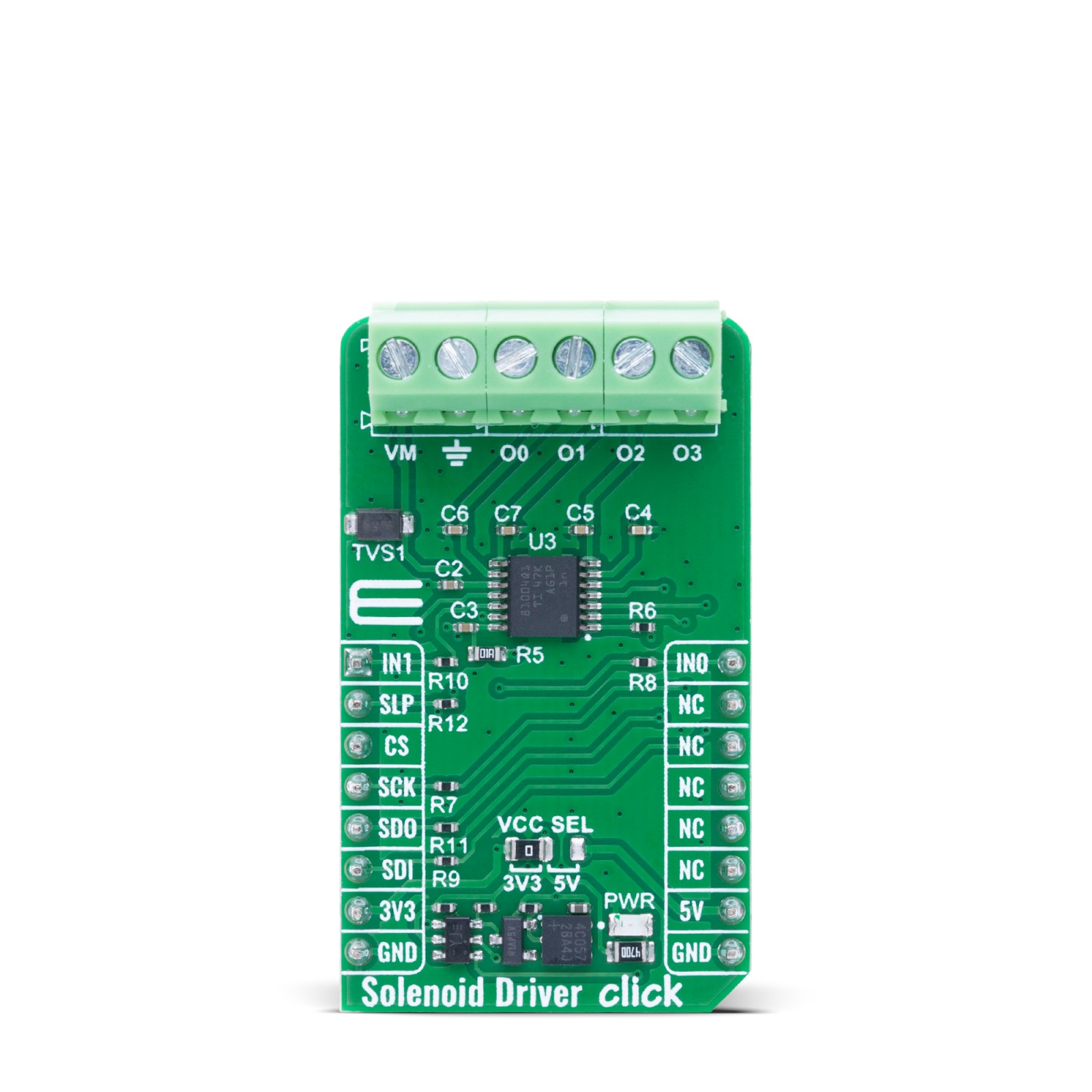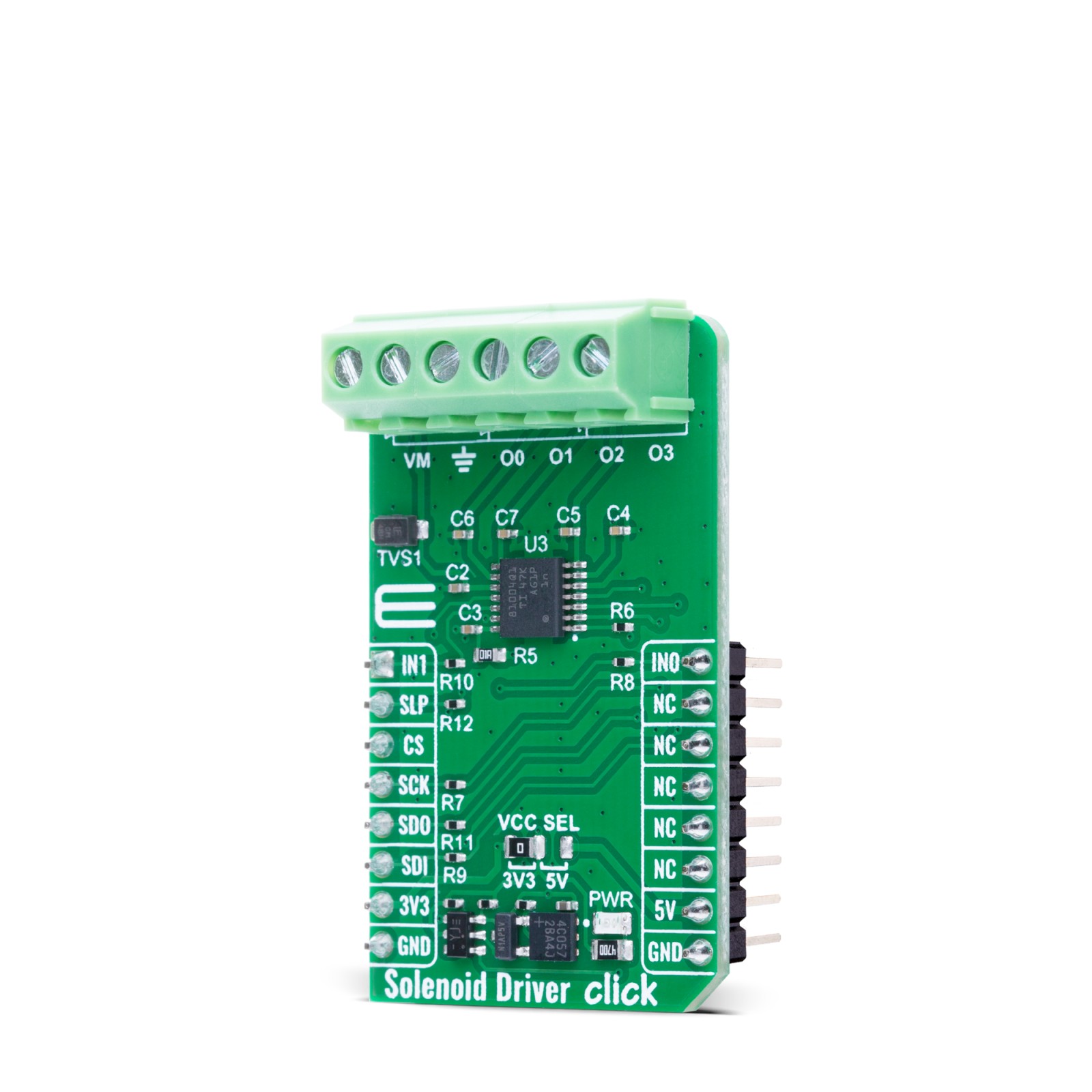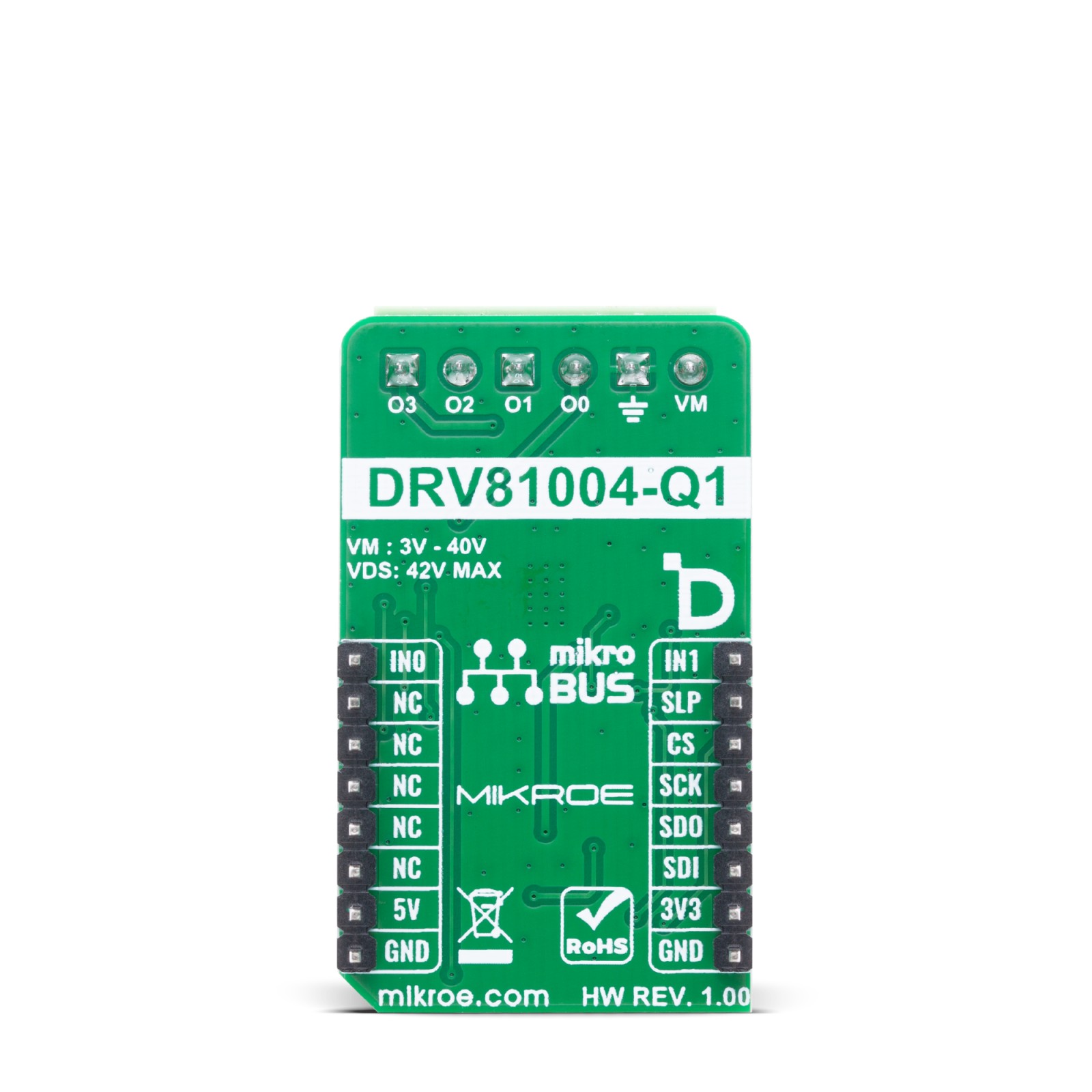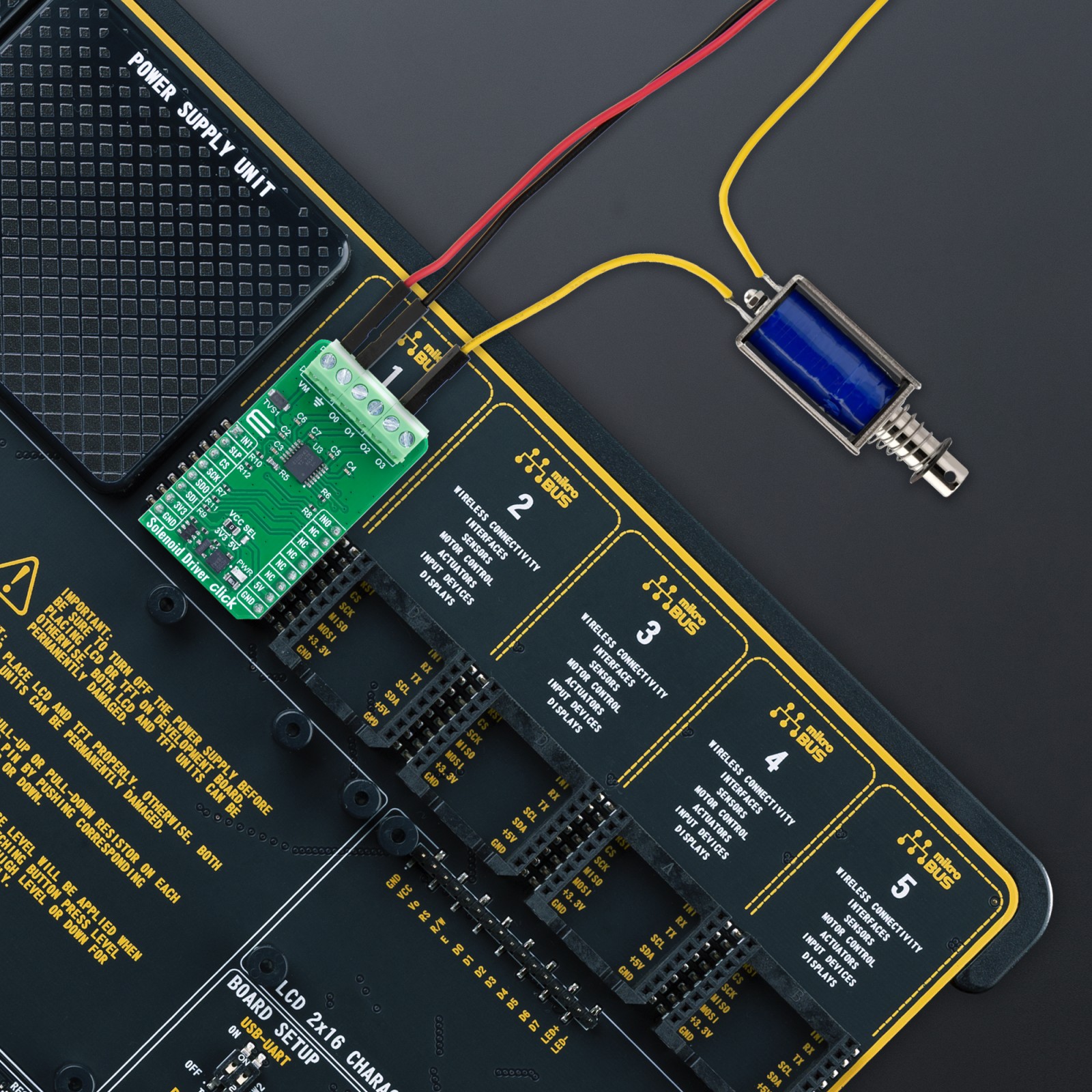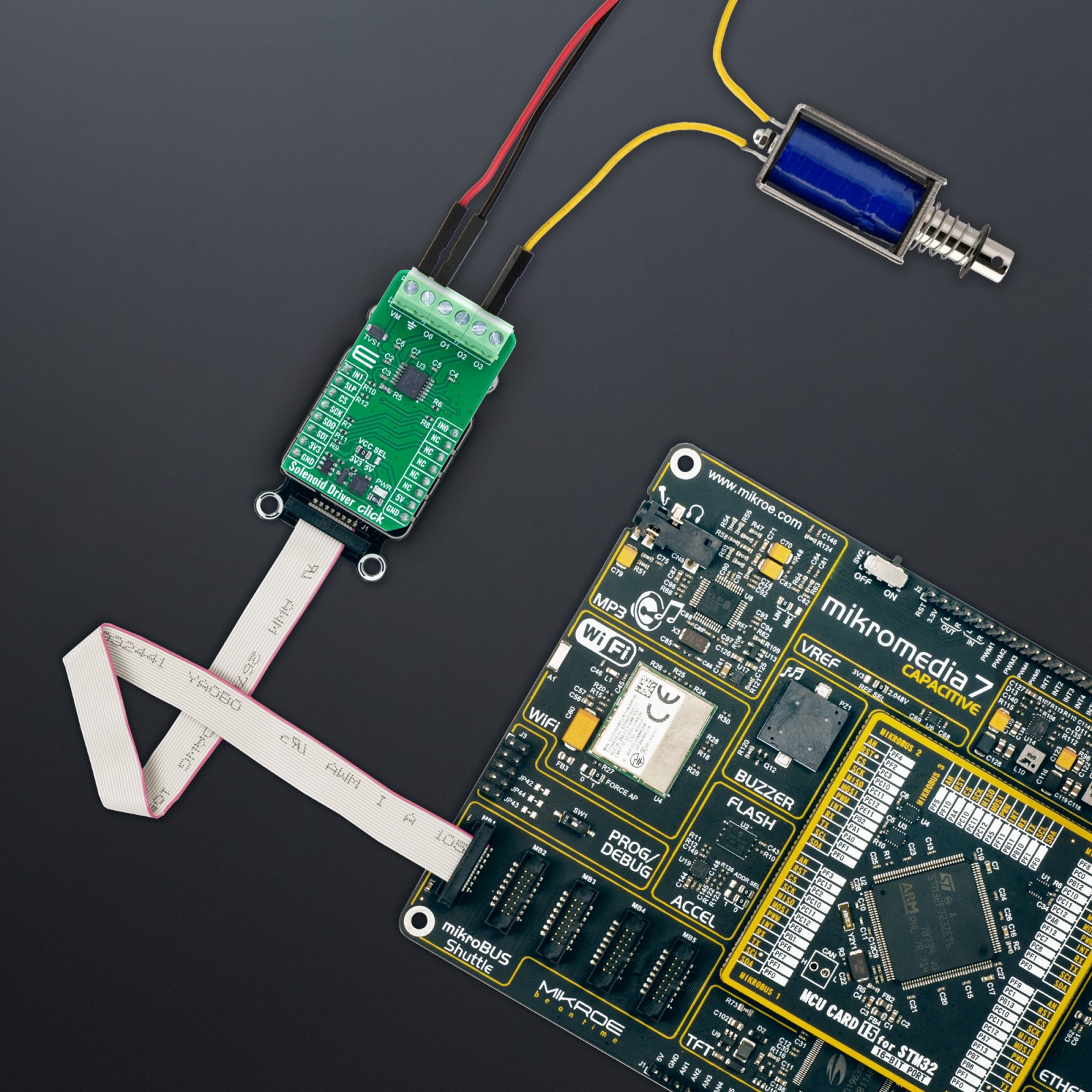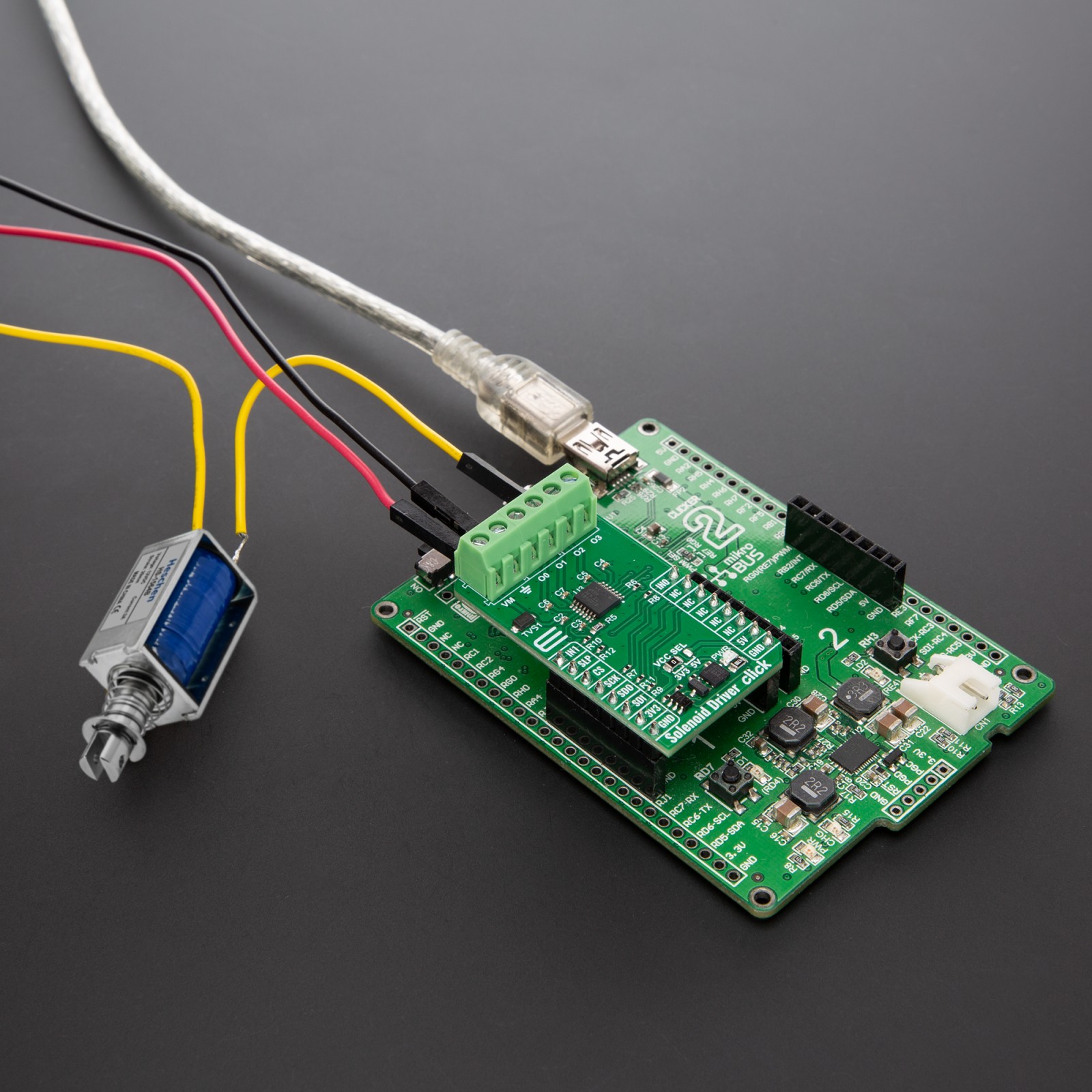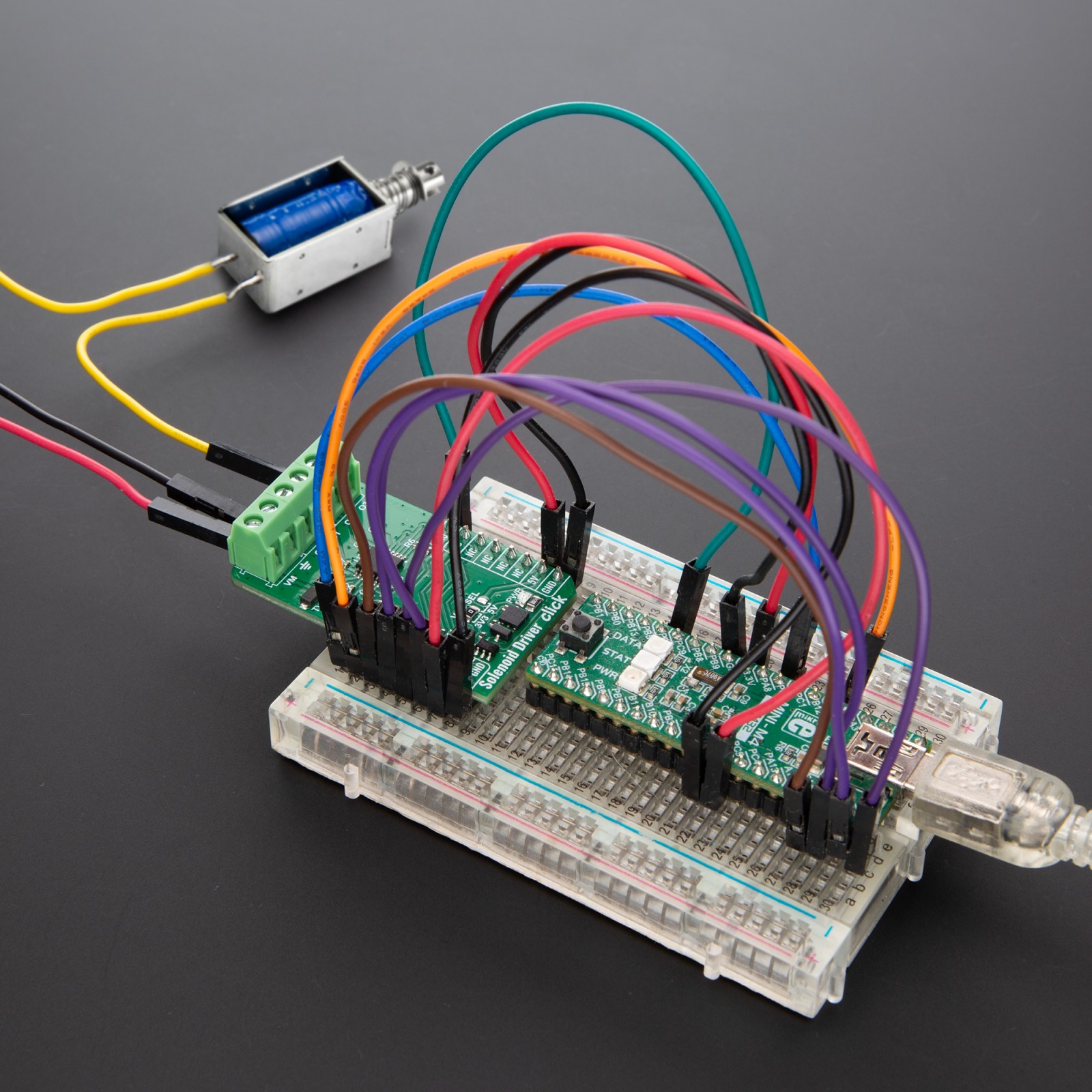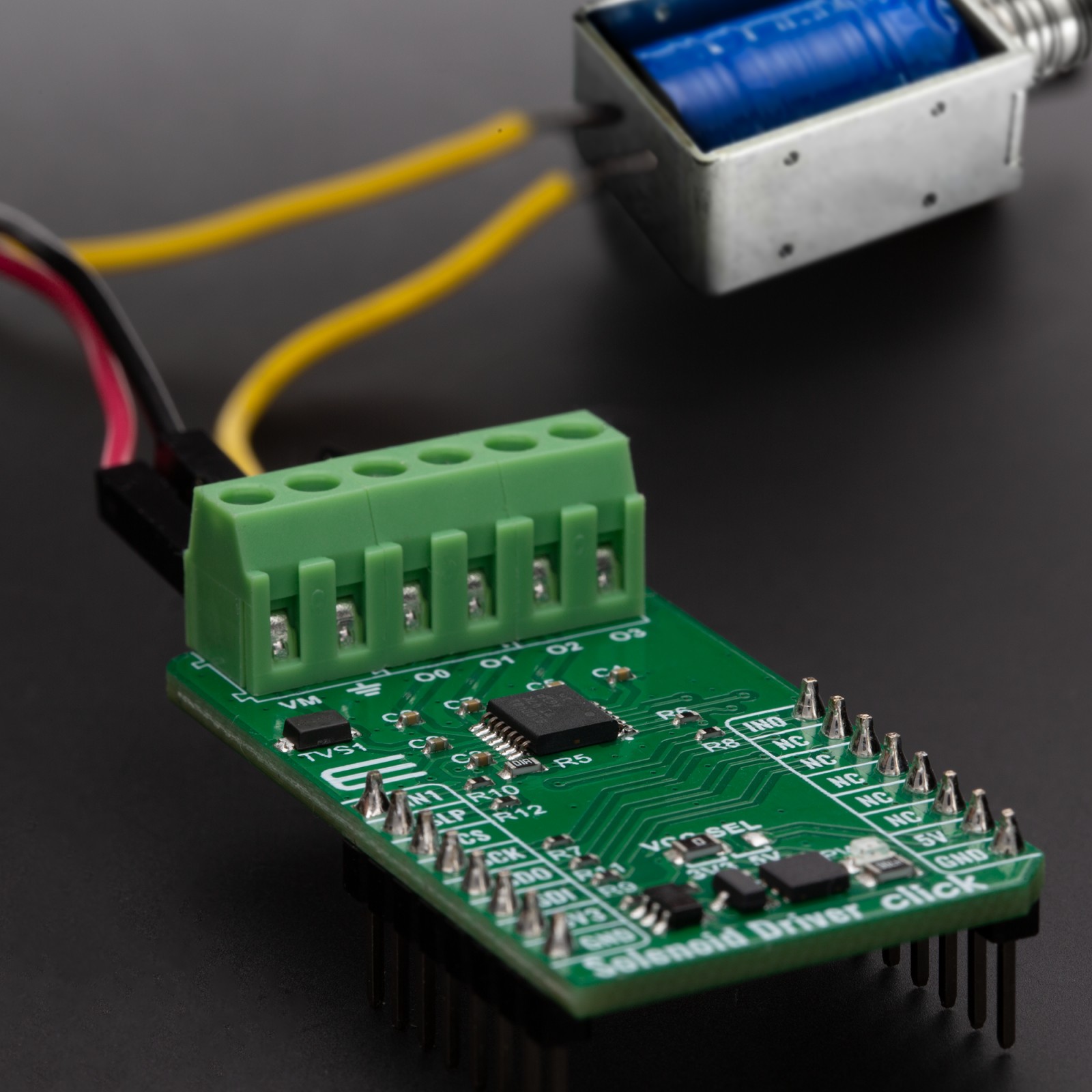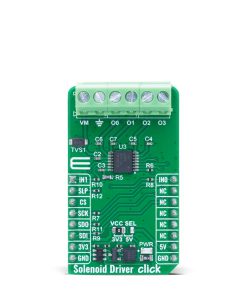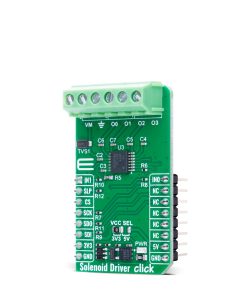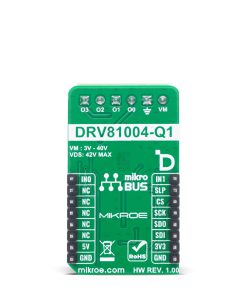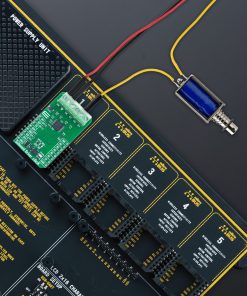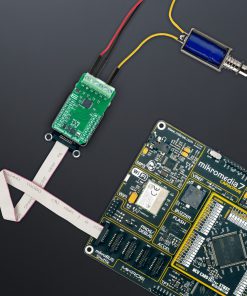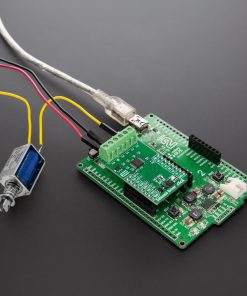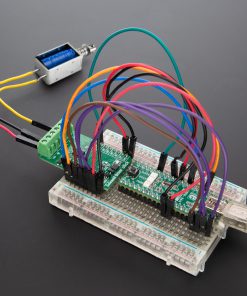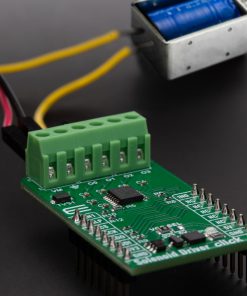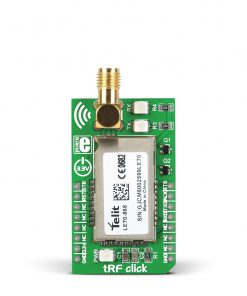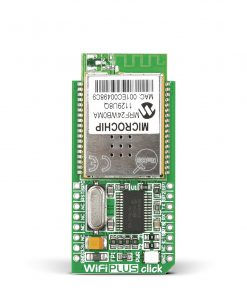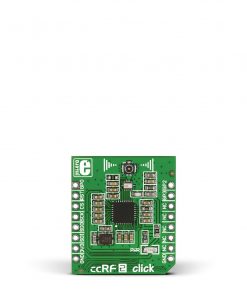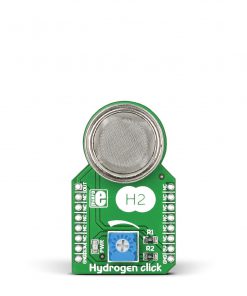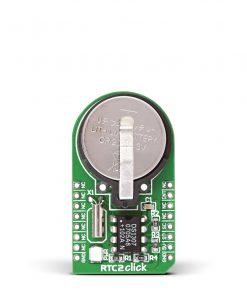Solenoid Driver Click is a compact add-on board designed to drive inductive loads such as solenoids and valves in automotive and industrial applications. It is based on the DRV81004-Q1, a four-channel low-side switch from Texas Instruments with integrated protection and diagnostic features. It features four N-channel MOSFETs with 700mΩ ON resistance, supports up to 470mA per output when all channels are active, and operates from a wide external supply voltage range of 3V to 40V. It offers SPI communication with daisy-chain support, PWM control via input pins, and an Input Mapping function that allows flexible output control. Built-in safety features include overcurrent and overtemperature protection, as well as open-load diagnostics and energy clamp circuits for inductive load switching. This Click board™ is ideal for use in Zone Control Modules, Body Control Modules, HVAC systems, lighting control, engine systems, and industrial PLC applications.
Solenoid Driver Click is fully compatible with the mikroBUS™ socket and can be used on any host system supporting the mikroBUS™ standard. It comes with the mikroSDK open-source libraries, offering unparalleled flexibility for evaluation and customization. What sets this Click board™ apart is the groundbreaking ClickID feature, enabling your host system to automatically detect and identify this add-on board.
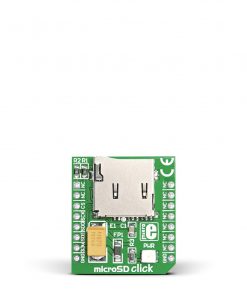 microSD Click
1 × R365.00
microSD Click
1 × R365.00  GSM/GNSS Click
1 × R1,750.00
GSM/GNSS Click
1 × R1,750.00 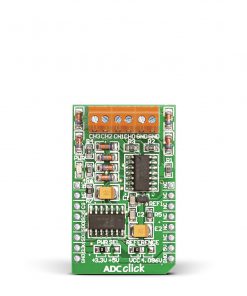 ADC Click
1 × R555.00
ADC Click
1 × R555.00 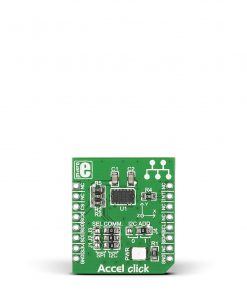 Accel Click
1 × R365.00
Accel Click
1 × R365.00 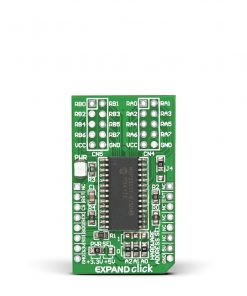 EXPAND Click
1 × R270.00
EXPAND Click
1 × R270.00 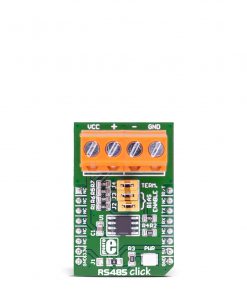 RS485 Click 5V
1 × R240.00
RS485 Click 5V
1 × R240.00 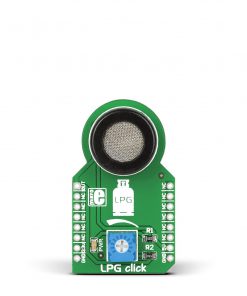 LPG Click
1 × R345.00
LPG Click
1 × R345.00 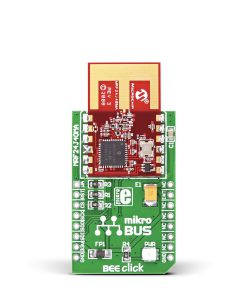 BEE Click
1 × R820.00
BEE Click
1 × R820.00 
